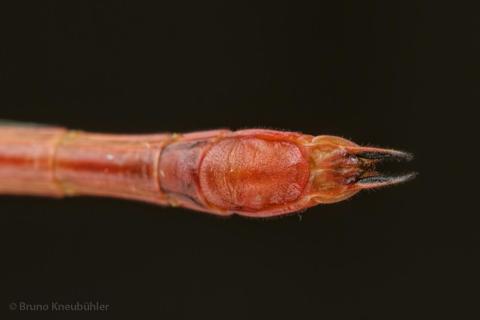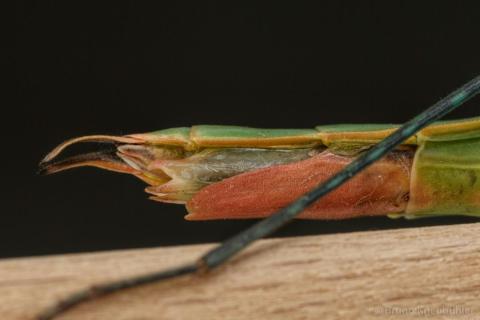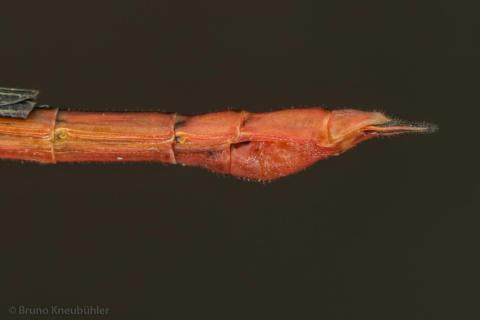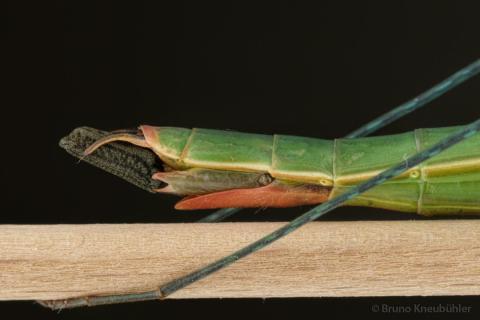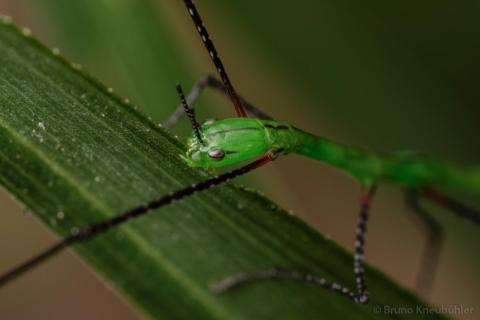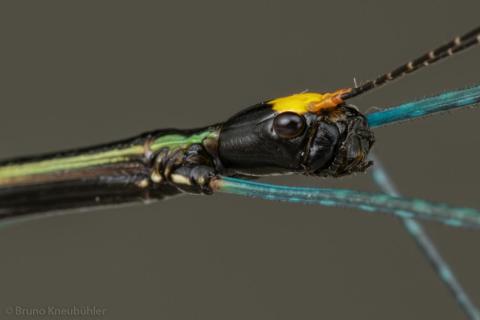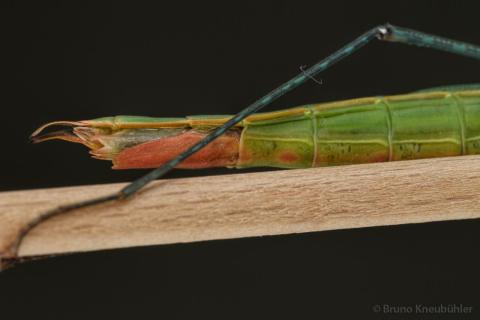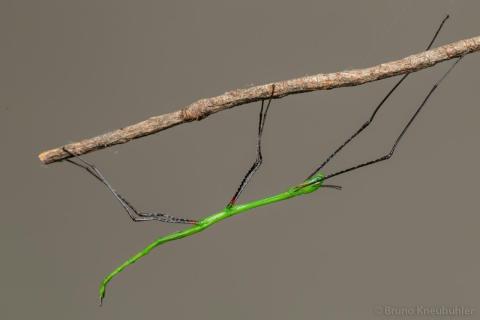
Genus
Species
Stock
CLP
815
Culture status
In culture
Foodplants
Coconut palm (Cocos nucifera)
Trachycarpus fortunei
Fishtail palm (Caryota)
Breeding notes
(by Bruno Kneubuehler)
General Informations
- provenience: Mt. Bagacay (near Labo town, Camarines Norte, Bicol, Philippines)
- ID confirmed by Joachim Bresseel (BE)
- F1 CB culture in 2015 by Thierry Heitzmann (PH)
- further taxonomical informations ➤ Phasmida Species Files
- this is a pure culture, and serious breeders are asked to avoid mixing this culture with similar populations from a different provenience. When spreading this culture to other breeders, then always use the full name with provenience
- this culture has the number CLP 815 (Online Phasma Culture List)
Females
- rather colorful, medium-sized species
- body length 10 cm
- glossy green with orange, black and yellow areas
Males
- slender, very colorful phasmids
- body length 6.5 cm
- glossy black with blue, yellow and red area
Nymphs
- freshly hatched nymphs are bright green with black legs
- ca. 25 mm lang
- on how to distinguish between male and female nymphs
Eggs
- 10 x 3 mm
- brown
Food Plants
- different palm leaves
- well accepted are
- coconut tree (Cocus nucifera)
- chinese windmill palm (Trachycarpus fortunei)
- fishtail palm (Caryota)
- moderatly well accepted, but it seems as if they do not thrive too well on:
- fishtail palm (Caryota)
- not accepted are:
- Chrysalidocarpus
Breeding, Behaviour
- easy to breed, if food plants are availble
- active mainly during the night
- especially adults try to escape by crawling away when they feel threatened
- a defensive spray has been observed
- females like to stick their eggs into cracks or a soft substrate
- filter wool (fish breeding, pet shop) attached to the sides of the cage, is very well accepted by the females to stick their eggs into it. And it is very easy to pull the eggs out of the filter wool and incubate them seperately
- about 5 eggs per female and week
- incubation (Cup-Incubation-method, on medium damp vermiculite) about 4 - 6 months at 20 - 24 °C
- eggs can be covered by vermiculite (about 5 mm high), which makes it easier for the nymphs to hatch without getting stuck in the eggs shell
- eggs of this species are not prone to get mouldy
- nymphs hatch during the night
- a high humidity is needed in the cage to keep the palm leaves fresh for some time
- thus a humidity of 80+ % seems advisable, which is also good for nymphs and adults
- one can spray them regularly with chlorine-free water, but allow the water to dry up before spraying again
- males will be adult after 3 months (at 20 - 24°C), females after 4 months
Basics of phasmids breeding
- keep only one species per cage, overpopulation is one of the main reasons for breeding failures
- keep nymphs seperate from the adults, mainly to protect them during the crucial moulting phases
- choose the cage big enough. When in doubt, too big is (usually) better than too small
- a ventilator often supports good breeding results, as it seems to increase activity and feeding
- provide enough light, but avoid direct sunlight (overheating)
- try to keep day time temperatures below 25°C
- a nocturnal fall of temperature is natural, and thus advantageous
- do not spray too much, phasmids are no fish ! The water should dry up before you spray again
- minimize disturbances (loud music, commotions, light at or during the night, opening up cages in the morning [often a moulting phase] ect.)
















